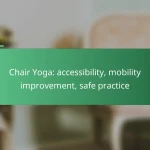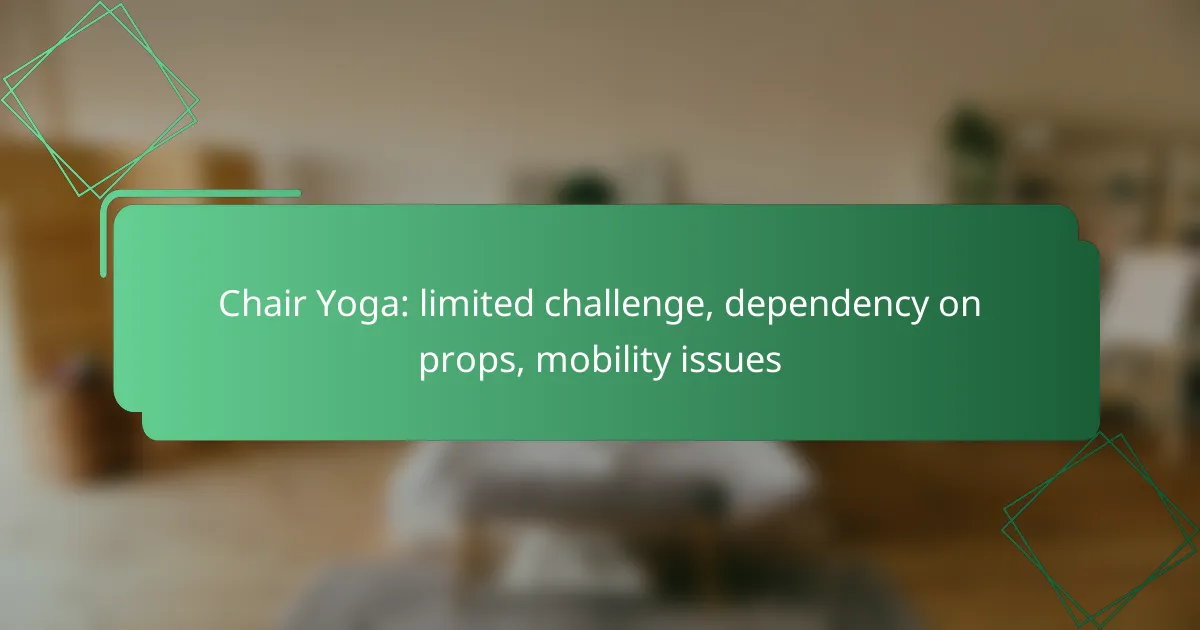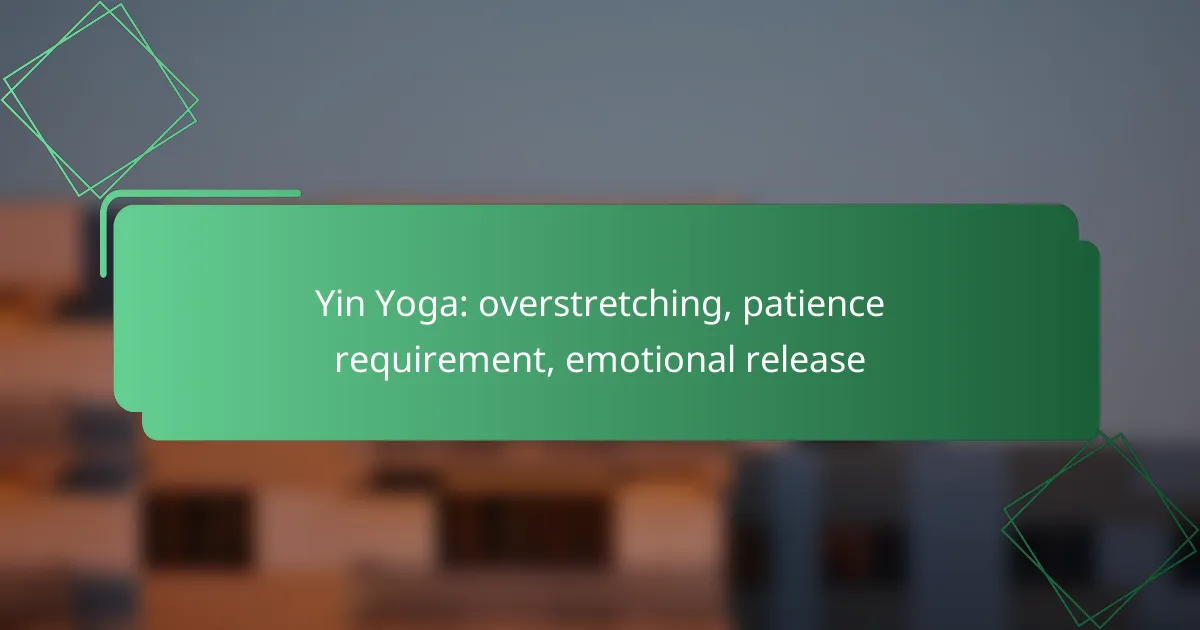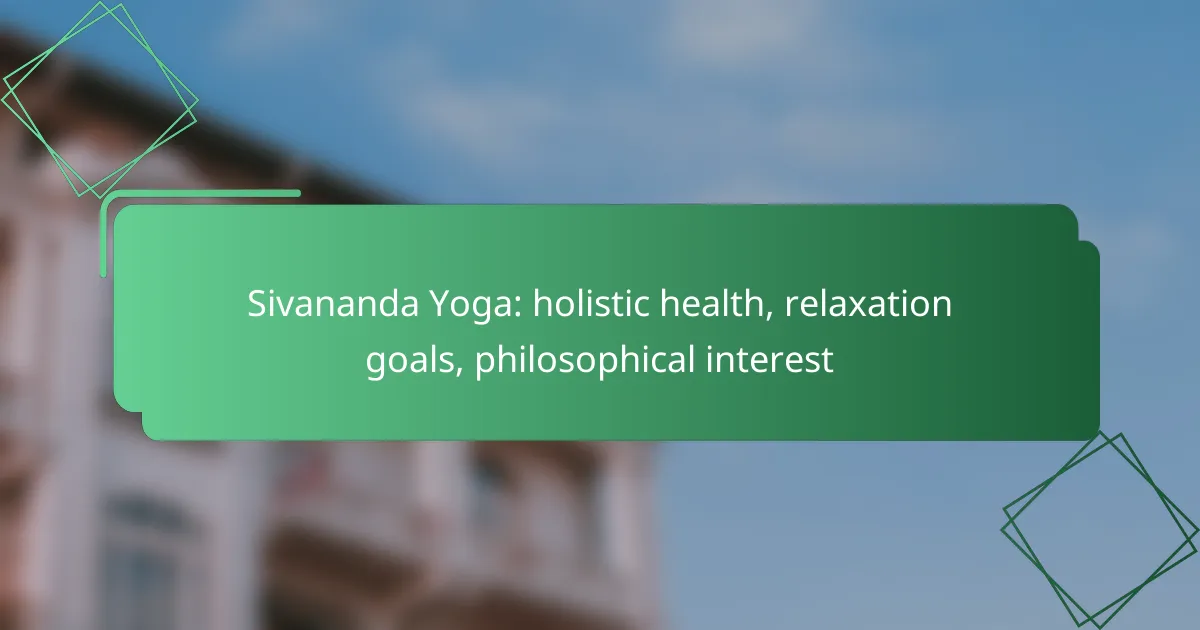Chair yoga is an accessible practice designed for individuals with mobility issues, providing a gentle way to improve flexibility, strength, and balance. By utilizing props such as blocks and straps, this form of yoga accommodates those who may rely on additional support, making it an ideal choice for seniors and others with limited physical capabilities. The benefits of chair yoga extend beyond physical improvements, contributing to reduced stress and enhanced overall well-being.

What are the benefits of chair yoga for mobility issues?
Chair yoga offers numerous benefits for individuals with mobility issues, including improved flexibility, enhanced strength, reduced stress, and increased circulation. These advantages can significantly enhance overall well-being and quality of life, making it an accessible option for those who may struggle with traditional yoga practices.
Improves flexibility
Chair yoga can help increase flexibility by allowing individuals to perform stretches and movements while seated. This modified approach reduces the risk of injury and makes it easier for those with limited mobility to engage in stretching exercises.
Regular practice can lead to gradual improvements in joint flexibility, which is essential for daily activities. Simple stretches targeting the arms, legs, and back can be incorporated into a routine, often requiring only a few minutes each day.
Enhances strength
Engaging in chair yoga can build strength, particularly in the core and upper body. By utilizing body weight and resistance through various poses, individuals can strengthen muscles without the need for heavy equipment.
Exercises like seated leg lifts and arm raises can be easily adapted to different fitness levels, allowing participants to progress at their own pace. Consistent practice can lead to noticeable improvements in strength over time.
Reduces stress
Chair yoga promotes relaxation and stress reduction through mindful breathing and gentle movement. This practice encourages participants to focus on their breath and body, which can help alleviate anxiety and tension.
Incorporating mindfulness techniques, such as deep breathing and visualization, can enhance the calming effects of chair yoga. Setting aside just a few minutes each day for these practices can lead to improved mental well-being.
Increases circulation
Chair yoga can enhance circulation by encouraging movement and stretching, which helps promote blood flow throughout the body. Improved circulation is vital for overall health, especially for those with mobility limitations.
Simple movements like ankle circles and seated twists can stimulate blood flow and reduce the risk of circulatory issues. Regular practice can contribute to better energy levels and reduced feelings of fatigue.

How can chair yoga help seniors in urban areas?
Chair yoga offers seniors in urban areas a gentle way to improve flexibility, strength, and balance without the need for extensive mobility. This practice is particularly beneficial for those with limited physical capabilities or who rely on props for support.
Accessible practice
Chair yoga is designed to be accessible for seniors, allowing them to perform various poses while seated or using a chair for support. This reduces the risk of falls and injuries, making it a safer option for those with mobility issues. Simple modifications can be made to traditional yoga poses, ensuring that everyone can participate regardless of their fitness level.
Common chair yoga poses include seated forward bends, gentle twists, and arm stretches. These movements can help enhance circulation, reduce stiffness, and promote relaxation. Practicing regularly, even for short sessions, can lead to noticeable improvements in overall well-being.
Community classes available
Many urban areas offer community classes specifically tailored for seniors interested in chair yoga. These classes often take place in accessible locations such as community centers, libraries, or senior centers, making it easy for participants to join. Instructors are typically trained to work with older adults, ensuring that the exercises are safe and effective.
Local organizations may provide free or low-cost classes, making chair yoga an affordable option for seniors. Additionally, participating in group classes can foster social connections and provide a supportive environment, enhancing the overall experience of practicing yoga.

What props are commonly used in chair yoga?
Chair yoga often utilizes props to enhance accessibility and comfort for practitioners with mobility issues. Common props include yoga blocks, straps, and cushions, each serving specific purposes to facilitate various poses and stretches.
Yoga blocks
Yoga blocks provide stability and support, making it easier to maintain proper alignment during chair yoga poses. They can be placed under hands or feet to reduce strain and help practitioners reach their full range of motion.
When selecting blocks, consider materials like foam or cork, which offer different levels of firmness and weight. A standard block size is around 23 cm x 15 cm x 10 cm, but choose what feels comfortable for your practice.
Straps
Straps are useful for extending reach and improving flexibility in chair yoga. They can assist in holding stretches or maintaining poses without overexerting oneself, especially for those with limited mobility.
Look for adjustable straps that are around 2-3 meters long, allowing for various uses. Avoid overly thick straps, as they can be cumbersome; a width of about 2.5 cm is generally effective.
Cushions
Cushions enhance comfort and support during chair yoga sessions, particularly for those who may struggle with prolonged sitting. They can provide additional height or cushioning, making poses more accessible.
Choose cushions that are firm yet comfortable, ideally around 5-10 cm thick. Consider using a cushion with a non-slip bottom to prevent it from sliding during practice.

How to choose the right chair for chair yoga?
Selecting the right chair for chair yoga is essential for ensuring comfort and safety during practice. Look for a chair that meets specific criteria to support mobility and stability while performing various poses.
Sturdy construction
A chair with sturdy construction is crucial for chair yoga, as it provides the necessary support during movements. Opt for chairs made from durable materials like metal or solid wood, which can withstand weight and resist wobbling.
Check the weight capacity of the chair, ensuring it can comfortably support your body weight. A well-constructed chair will enhance your confidence while practicing yoga, allowing you to focus on your movements rather than your stability.
Comfortable height
The height of the chair plays a significant role in accessibility and ease of use during chair yoga. A chair should allow your feet to rest flat on the floor while sitting, promoting proper posture and balance.
Generally, a seat height of around 18 to 20 inches is suitable for most individuals. However, if you have mobility issues or shorter legs, consider a chair with a lower seat to ensure you can easily get in and out of it.
Non-slip surface
A non-slip surface on the chair is vital for safety during chair yoga. Look for chairs with rubber feet or a textured seat to prevent slipping, especially when transitioning between poses.
Additionally, consider using a yoga mat or a non-slip cushion on the chair for extra stability. This added layer can enhance your grip and comfort, allowing you to focus on your practice without worrying about losing your balance.
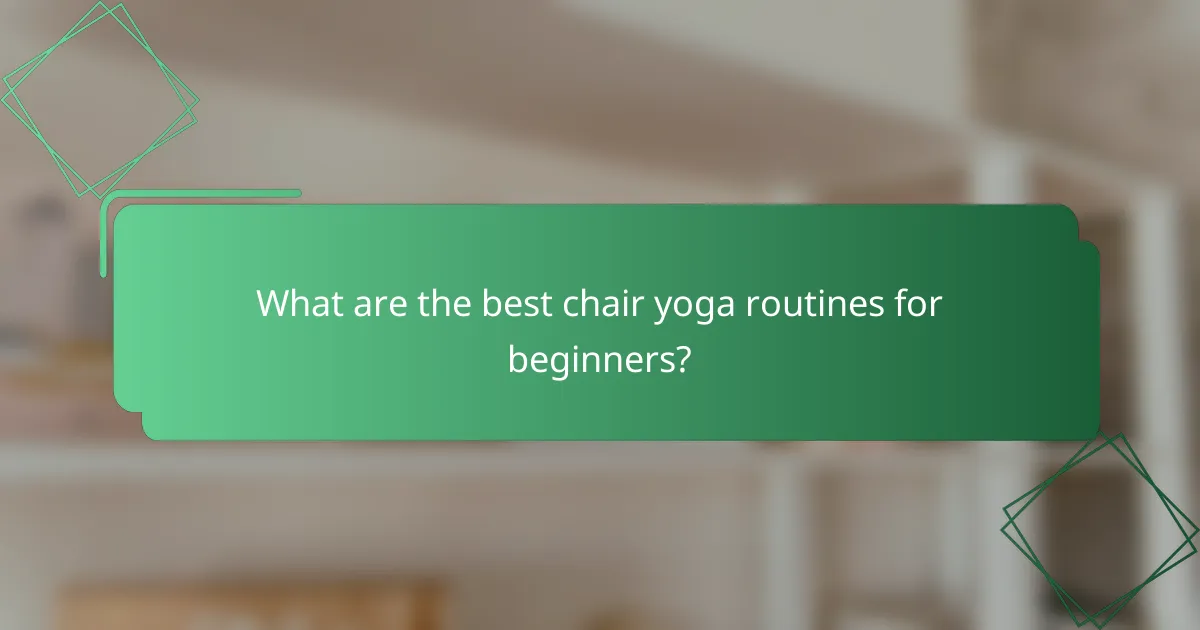
What are the best chair yoga routines for beginners?
For beginners, the best chair yoga routines focus on gentle movements that enhance flexibility and strength while accommodating mobility issues. These routines often utilize props to provide support and stability, making them accessible for those with limited challenge levels.
Seated forward bend
The seated forward bend is a simple yet effective pose that stretches the back and hamstrings while promoting relaxation. To perform this pose, sit at the edge of your chair with your feet flat on the floor, hip-width apart. Inhale deeply, then exhale as you hinge at your hips, reaching your torso toward your thighs.
Consider using a cushion or blanket on your lap to rest your arms if you cannot reach your feet comfortably. Hold the position for several breaths, allowing your body to relax into the stretch. Avoid rounding your back; instead, keep it long and extended.
Chair pigeon pose
Chair pigeon pose is excellent for opening the hips and relieving tension in the lower body. Start by sitting upright in your chair with both feet flat on the ground. Cross your right ankle over your left knee, creating a figure-four shape. Keep your back straight and gently lean forward to deepen the stretch.
Hold this position for a few breaths, feeling the stretch in your right hip. Switch sides by uncrossing your legs and repeating with the left ankle over the right knee. If you experience discomfort, adjust the position of your legs or use a prop for support.



